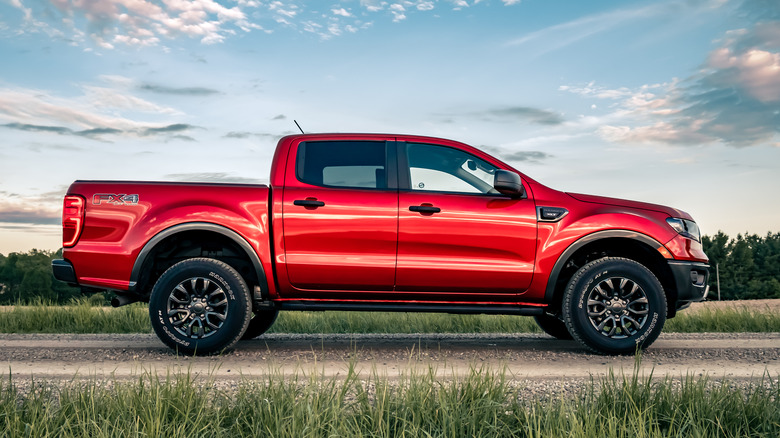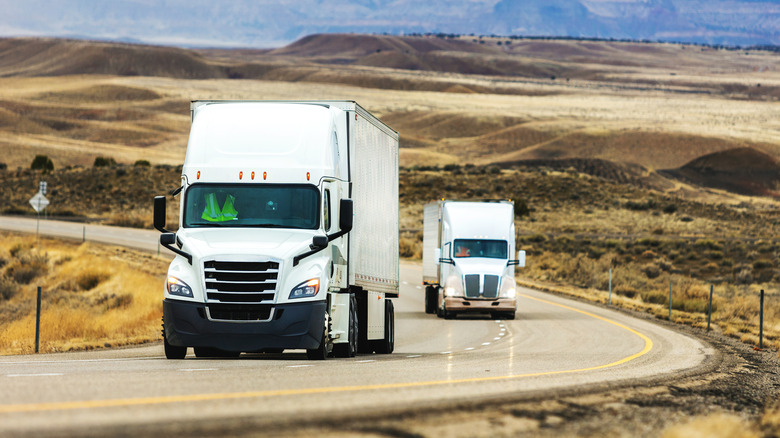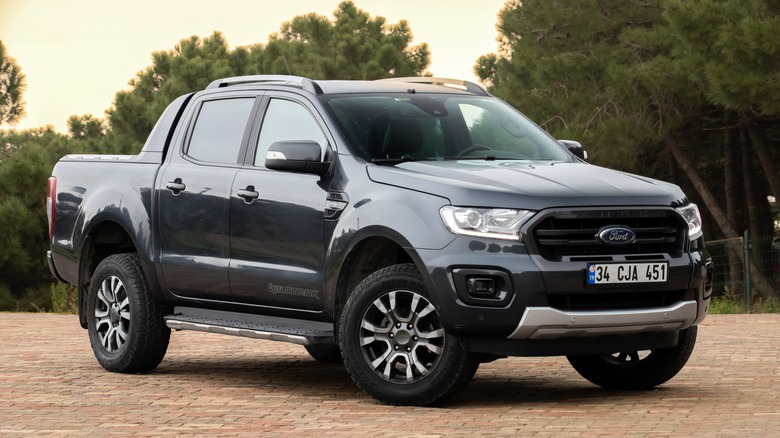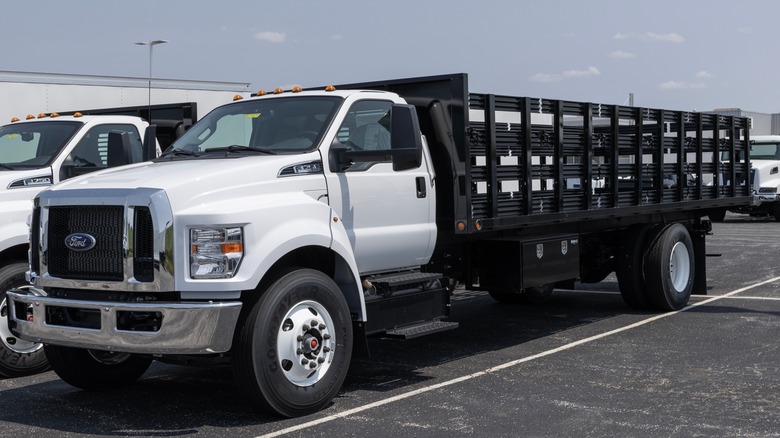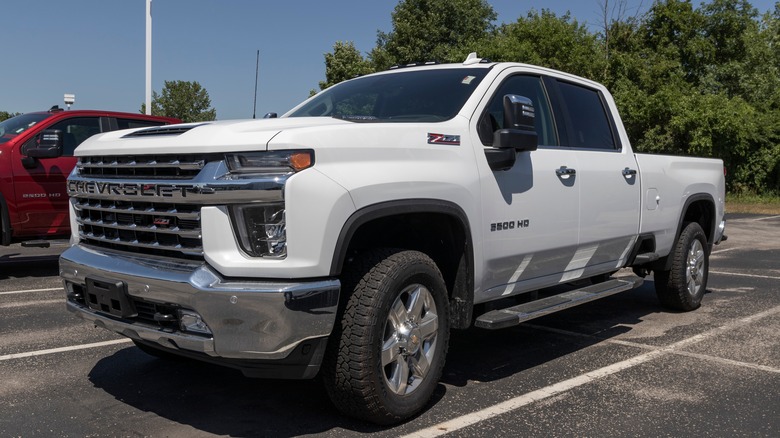Light Duty Truck VS Heavy Duty: What's The Big Difference?
When you've got a big load that you need to haul, that's no job for an ordinary car — that's a job for a proper truck. A truck can give you much greater muscle and towing power than a regular car. However, not all trucks are created equal. Some trucks are designed to haul smaller loads around residential roads, while others are designed to rule the highway with massive cargo holds. It is in this distinction that we find the difference between light-duty and heavy-duty trucks.
It's important to know the difference between a light-duty and a heavy-duty truck because if you try to do one's job with the other, you could run into all kinds of problems and complications. So, what exactly is the difference between light and heavy-duty trucks, and what kinds of hauling jobs are each intended for? The answer lies in the Gross Vehicle Weight Rating.
Truck classifications explained
Light and heavy duty are two of three truck classifications, which are themselves simplified versions of an eight-class system determined by the Gross Vehicle Weight Rating statistic, or GVWR. The GVWR is an abstraction of a truck's maximum safe operating weight, including both the truck itself and any payloads it's hauling.
Light duty trucks encompass GVWR classes 1 through 3, medium duty trucks encompass classes 4 through 6, and heavy duty trucks encompass classes 7 and 8. Incidentally, class 2 is divided into two sub-classes, 2A and 2B.
By understanding these classes, you can get a good idea of what light or heavy-duty trucks can handle on the road. Lower-class trucks are more similar to traditional cars, with just enough size and carry weight to be considered trucks without requiring special training or licensure. High-class trucks are obviously much larger in size and strength, often require some kind of special license to operate, and can't be used on certain types of roads.
Light duty in general
Any truck with a GVWR rating of zero to 14,000 pounds is considered a light-duty truck. This includes smaller pickup trucks like the Ford Ranger, Ford F-450, and the Chevy Silverado. If you find a small pickup on the lot at a local car dealership alongside the regular cars, it's probably a light duty.
Light duty trucks are intended primarily to be the next step up from a regular car, something you can drive on a residential or unpaved road while also packing enough raw muscle to haul small loads. For example, a light-duty truck would be ideal for hauling a small camper into the woods or a mid-sized boat to a marina.
Since light-duty trucks are closer in size to cars, they tend to be subjected to more stringent emission standards. As a result of this, light-duty trucks tend to get slightly better gas mileage than their larger counterparts.
Heavy duty in general
Any truck with a GVWR rating of 26,000 to 33,000 and up is considered a heavy-duty truck. This includes rougher customers like the Ford F-750 and the Silverado 3500HD, as well as full-on utility vehicles like tractor-trailers and dump trucks. If you need a heavy-duty truck, you'd likely need to contact a specialized dealer.
Heavy-duty trucks are designed for one thing over all else: power. If you need to haul a large cargo trailer or a stack of construction materials, that's a job for a heavy-duty truck. Because of the emphasis on power, not to mention their massive size, heavy-duty trucks can't be driven on uneven, non-commercial roads, at least not safely. In fact, trucks of this size can't even be owned and operated without at least a Class-B commercial vehicle license, possibly a Class-A if your load is over 10,000 pounds on its own.
To facilitate their mighty towing power, heavy-duty trucks usually pack equally powerful diesel engines and supersized suspensions. Great for towing but not so much for gas mileage.
What can a light duty do that a heavy can't?
Generally speaking, unless you're a professional freight tower, a light-duty truck is plenty for whatever you need. Light-duty trucks can handle modest loads like furniture or camping supplies and often have better movement control. A light-duty truck can drive safely on commercial, residential, and undeveloped roads, not to mention squeeze into tunnels that a heavy-duty truck would be too large to enter. If you want to go on a brief vacation with your friends and need something rugged to carry the lot of you, light duty is the name of the game.
It's also worth noting that the smaller size and carrying capacity of light-duty trucks make them more affordable to non-professional drivers. If you need a vehicle that can get you to work in the morning and do some light hauling, a light-duty truck is a much more sensible option than something with thousands of pounds of muscle you'll never use.
What can a heavy duty do that a light can't?
If you work as a professional freight driver or plan on becoming one, a heavy-duty truck is an absolute necessity. If you're hauling large cargo, the extra muscle that comes with a heavy-duty truck will allow you to safely and efficiently move it across the nation's highways. These behemoths may be expensive to own and operate, but if you're in their wheelhouse, they'll take care of you.
Basically, if you're buying a truck for the express purpose of hauling stuff rather than just traveling for its own sake, a light-duty truck wouldn't be able to handle that job. Trying to haul a massive cargo trailer with a light-duty pickup truck is like trying to lift a massive dumbbell with your pinky finger; it can't be done. If you're driving for a professional moving company, a large object delivery service, a multi-car towing service, or any similar business, you need a heavy duty.
